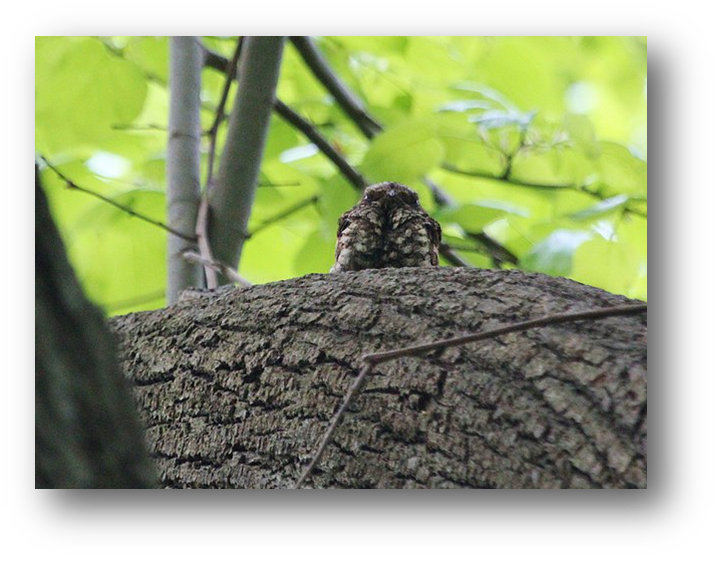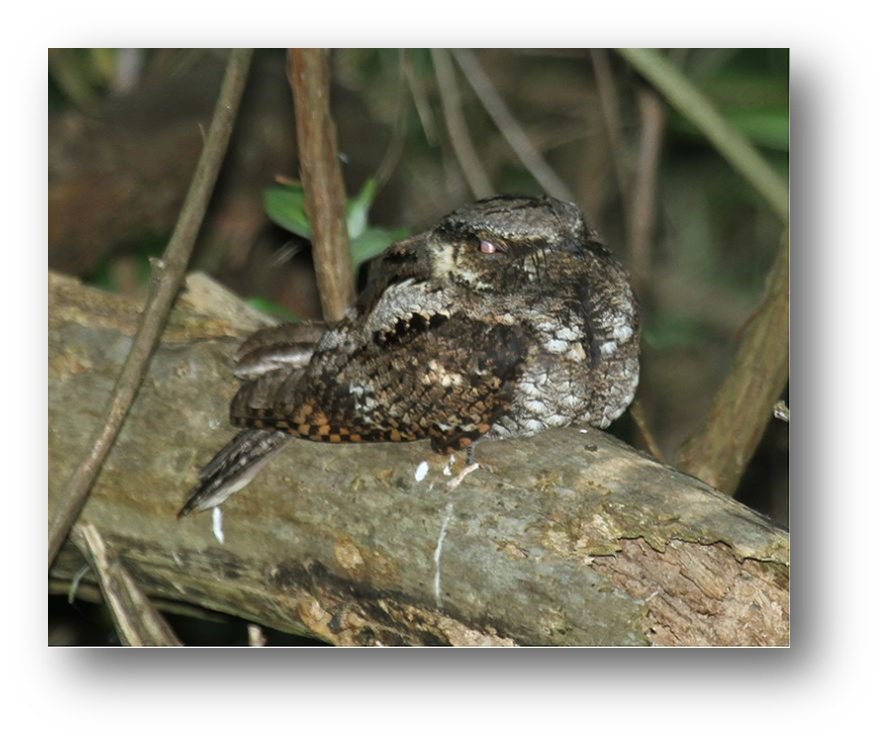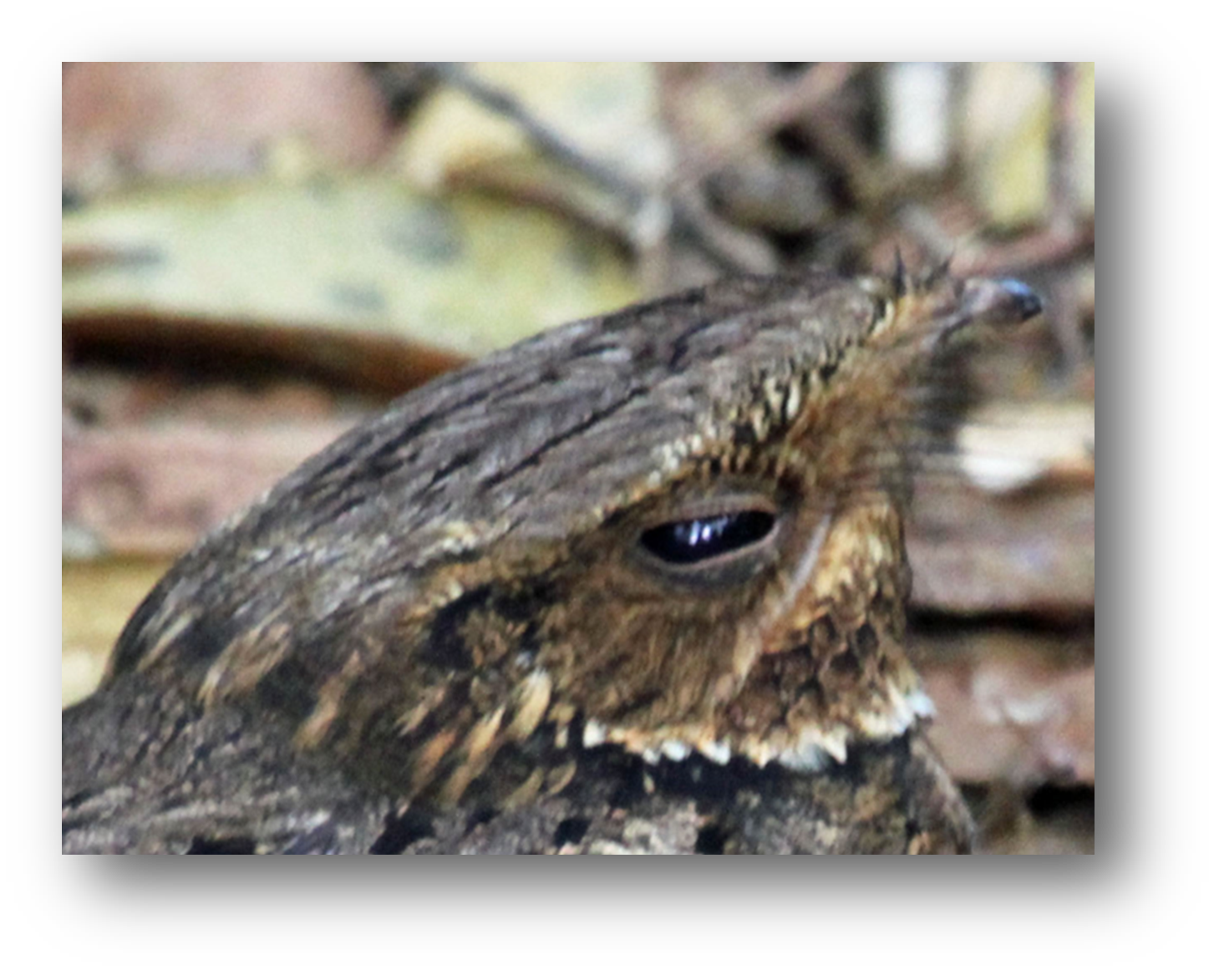
VIEW ON NATURE
Clarion Call: Masters of Disguise
By: Stephen L. Wendt

The luminescence from the half-moon permeated the pre-dawn Spring woods. Long vertical shadows cast by the trees accented the tranquility, the stillness, the forest hush.
That’s when the loud, crystal-clear call…‘whip-poor-will, whip-poor-will, whip-poor-will’ sounded off. The unmistakably crisp ‘whip’, the falling ‘poor’, and the high-pitch ‘will’, echoing over and over and over.
Male whip-poor-wills, whose name is an onomatopoeia of their call, only ‘sing’ in pursuit of lifetime mates at night when there's at least 50% moon illumination. The eastern whip-poor-will belongs to a group of nocturnal birds known as “nightjars” named for their nighttime habits and jarring vocalizations. Upon arrival from their wintering grounds, males energetically call at night throughout the mating, nesting and rearing of young periods.
Their loud, repetitive calling is unforgettable. This often-heard but seldom-seen bird seemingly calls endlessly; according to the Audubon Society, one patient observer counted 1,088 consecutive calls without a break!
Whip-poor-wills are nocturnal insectivores that have evolved distinctive features and unique appearance. They have huge, highly adapted night-vision eyes for hunting and maneuverability. Their short, gaping beaks are equipped with two rows of forward-facing bristles to funnel predominantly large moths and other insects into their maws for swallowing whole during flight.
This stumpy bird is about the size of a robin with a wide 19-inch wingspan. Whip-poor-wills are temporary residents of the eastern forests, spending their winters feeding on insects in warmer southeastern United States. As spring arrives, they migrate north to feed on the seasonal abundance of insects in our eastern woodlands, breed, and rear their young.
For successful hunting and nesting, whip-poor-wills seek deciduous upland forests with special characteristics --less leafy upper tree canopies, and little-to-no under-story. Thinner canopies allow moonlight to penetrate the forest, making insect prey more visible; forests with less under-story are easier to maneuver within and don’t hide lurking predators as well. Large grassy fields and brushy clearcuts which don’t match the bird’s camouflage coloration are avoided.
Whip-poor-wills are masters of camouflage. Their grey/ brown coloration and ability to remain completely motionless for hours utterly conceals them on the forest floor against predators. As invisible ground nesters, they lay two eggs on the shady leaf litter without constructing a nest. Trust me, you will never, ever discover one of these birds on the ground until, literally, almost stepping on them!
Scientists report a decline in these unique birds in some areas. Some combination of logging, pesticide use, suburban development, moth population declines, and increase in ‘edge nest predators’ (skunks, raccoons, opossums) are suspected.
I’ve spent many a spring night dozing off in the Virginia woods and early dawns venturing out on hikes and a trout fishing adventures in company of the seemingly never-ending calls of the whip-poor-will. To me, Springtime in the woods means bluets, trilliums, lady slippers, and wild azaleas in bloom; spring peeper frogs and tom turkeys sounding off; and the unforgettable whip-poor-wills calling.
Whereas Ralph Waldo Emerson wrote: “Earth laughs in flowers”, to me, the whip-poor-will’s clarion call heralds the woodland Spring has arrived. When Spring 2024 arrives, keep your eyes pealed to see this Master of Disguise in a tree or even on the forest floor.
Reproduction of any article or photograph requires the written permission of the
The ENDEAVOR News Magazine. Unless otherwise noted, photographs are courtesy of the Annandale Chamber of Commerce photographic archive, Wikipedia, and private collections with all rights reserved.
(Copyright © 2012 Annandale Chamber of Commerce. All rights reserved. (Photographs & images, on this page, and on this website, are not available for use by other publications, blogs, individuals, websites, or social media sites.)

Eastern Whip-Poor-Will at Maggee Marsh, Ohio
Photo by Tony Castro Creative Commons Attribution-Share Alike 4.0 International

Note the specialized forward-facing hairs for funneling insects into the whip-poor-will’s wide mouth
Exum, North Carolina Creative Commons Attribution-Share Alike 3.0

Eastern Whip-Poor-Will at Maggee Marsh, Ohio
Photo by Tony Castro Creative Commons Attribution-Share Alike 4.0 International
Photo credit: Stephen L. Wendt with all rights reserved.
(Copyright © 2012 Annandale Chamber of Commerce. All rights reserved. (Photographs & images, on this page, and on this website, are not available for use by other publications, blogs, individuals, websites, or social media sites.)
Copyright 2012 Annandale Chamber of Commerce. All rights reserved. Privacy Policy

